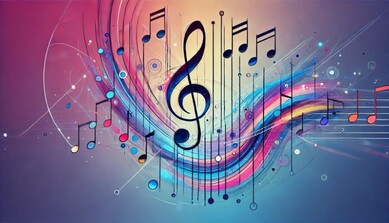Why We Love Music...

Welcome to Bluefin! Dave and Wes are friends who share a love of music and in early 2022 started working together to build cool digital products for musicians (more on that in a future post…). This led to the idea of starting an online community for musicians that fosters learning, collaboration, encouragement and generally good vibes!
Their vision is to build a space where musicians from all walks of life and at various levels of competency can share their creations, experiences and ideas, and build on those with help from others. It’s also a place to learn, ask questions and develop skills at a pace each individual is comfortable with. It’s not an official place of learning by any means, it’s more of a positive social network environment for musicians to engage and collaborate with others.
They’re not exactly sure where this will lead or how it will develop but you’re invited to join the journey. Whether you’re toying with learning how to play the guitar or a master of twelve-tone serialism (we don’t even know how that works?!) come along for the ride. It’s free and they hope it will do you good!
Below is the first of many posts about music. Today we’re scratching the surface of why, as human beings, we are moved by music and some of the benefits associated with it. Enjoy…
It’s fascinating how a simple melody can transport us back in time, evoke strong emotions, or even make us feel like we’re on top of the world. But why is music so universally enjoyed? What is it about music that can make us feel happy, sad, energised, or relaxed?
The Universal Language
Music is often called the universal language, and for good reason. It can communicate emotions and ideas without words. Regardless of culture, background, or language, people all over the world can understand and appreciate music. This universality is a clue to its deep-rooted connection to the human experience.
The Brain and Music
When we listen to music, multiple areas of our brain light up and work together. Here’s a simple breakdown of what happens:
- Auditory Cortex: This part of the brain processes sounds. When music enters our ears, the auditory cortex analyzes the different components like pitch, volume, and rhythm.
- Nucleus Accumbens and Ventral Tegmental Area (VTA): These regions are part of the brain's reward system. They release dopamine, a feel-good chemical the body produces, which makes us feel pleasure and satisfaction when we listen to music we enjoy.
- Amygdala: This area processes emotions. Music can trigger the amygdala to release various chemicals, which can make us feel emotions.
- Hippocampus: This part of the brain is involved in memory formation. Music often evokes memories, making us feel nostalgic or reminding us of specific events or periods in our lives.
- Cerebellum: This area helps us process rhythm and coordination. It explains why we often tap our feet or dance along to music.
Emotional Resonance: Why Music Moves Us
Music's ability to stir our emotions is rooted in its complex interaction with the brain's emotional circuits. Here are some reasons why music affects us so deeply:
- Melody and Harmony: Certain combinations of notes can evoke specific emotions. For example, major chords often sound happy and uplifting, while minor chords can sound sad or melancholic.
- Rhythm and Tempo: Fast tempos can energize us and make us feel more alert, while slow tempos can have a calming effect.
- Lyrics: Words in songs can tell stories, convey messages, and express feelings that resonate with our own experiences.
- Cultural Associations: Different cultures have unique musical traditions that influence how music is perceived and experienced. For instance, a particular type of music may be associated with celebrations, rituals, or mourning in different cultures.
- Personal Connections: Music often becomes a soundtrack to our lives. Songs can remind us of people, places, and moments, making them powerful emotional triggers.
The Social Aspect of Music
Humans are inherently social creatures, and music plays a significant role in social bonding. Here’s how:
- Group Cohesion: Singing, dancing, and playing instruments together can create a sense of unity and belonging. This has been important in various social and cultural rituals throughout history.
- Communication: Before the advent of language, early humans may have used music-like sounds to communicate emotions and intentions. This is still evident in how lullabies calm babies or how people use music to express love and sorrow.
- Shared Experiences: Concerts, festivals, and other musical events bring people together, fostering shared experiences and memories.

